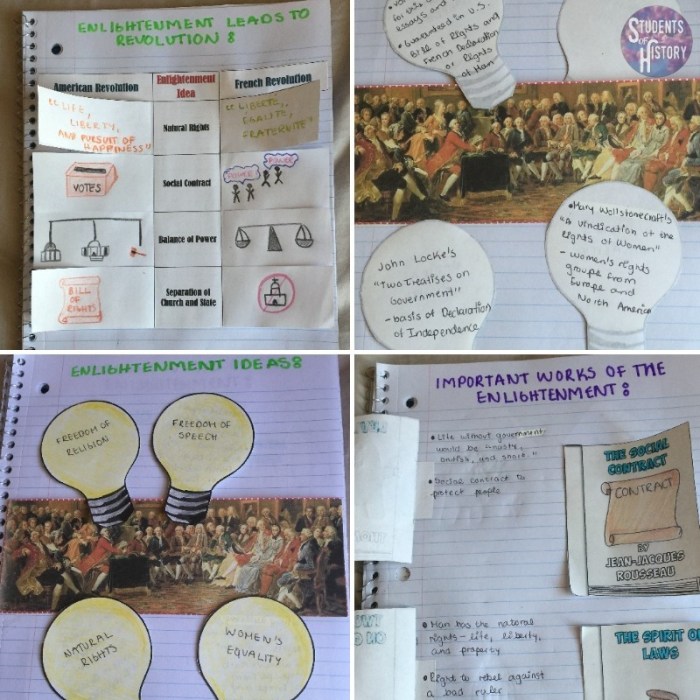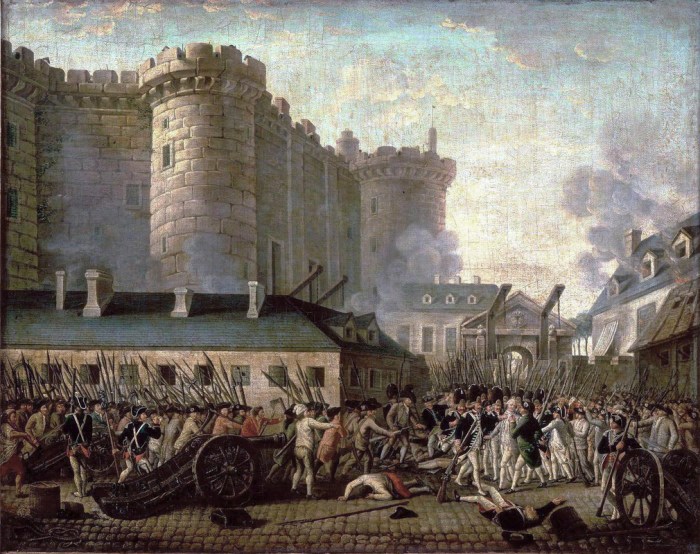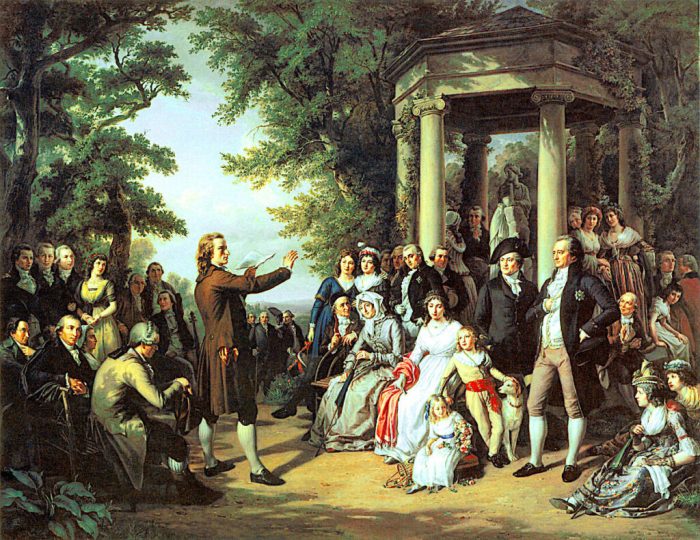Primary sources on the Enlightenment offer a direct window into one of history’s most transformative intellectual movements. From letters and diaries to philosophical treatises, these invaluable documents provide an unparalleled glimpse into the ideas, beliefs, and values that shaped this era.
Through meticulous analysis and interpretation, primary sources illuminate the motivations of historical figures, reconstruct historical events, and provide insights into the intellectual landscape of the Enlightenment.
Defining Primary Sources on the Enlightenment

Primary sources, as opposed to secondary sources that analyze and interpret past events, are firsthand accounts of historical events created during the time period being studied. These sources provide valuable insights into the thoughts, beliefs, and experiences of people living during that era and are crucial for historical research.
Examples of primary sources relevant to the Enlightenment include:
- Letters:Correspondence between individuals, such as philosophers, scientists, and political figures, reveals their personal views and discussions on Enlightenment ideas.
- Diaries:Personal journals and diaries provide intimate accounts of daily life, thoughts, and experiences during the Enlightenment.
- Philosophical treatises:Original works by Enlightenment philosophers, such as John Locke, Voltaire, and Jean-Jacques Rousseau, present their groundbreaking ideas and arguments.
- Scientific papers:Published works by scientists, such as Isaac Newton and Antoine Lavoisier, document their experiments, discoveries, and theories that shaped the scientific revolution during the Enlightenment.
- Government documents:Official records, such as laws, treaties, and speeches, offer insights into the political and legal frameworks of the Enlightenment era.
- Newspapers and pamphlets:Printed materials disseminated information and shaped public opinion during the Enlightenment.
Analyzing primary sources allows historians to gain a deeper understanding of the Enlightenment period, its key figures, and the transformative ideas that emerged during this era.
Identifying Primary Sources on the Enlightenment

Identifying primary sources on the Enlightenment is crucial for understanding the intellectual and cultural movement that shaped modern thought. These sources provide firsthand accounts, perspectives, and insights into the ideas and events that defined this era.
To locate primary sources, researchers can explore various avenues, including:
Online Databases and Archives
- Google Scholar:An extensive academic search engine that indexes scholarly literature, including primary sources.
- JSTOR:A digital library with a vast collection of academic journals and primary sources.
- Europeana:A digital platform that provides access to millions of digitized cultural heritage objects, including primary sources on the Enlightenment.
Libraries
Libraries, especially those with specialized collections on the Enlightenment, house a wealth of primary sources, such as:
- Manuscripts:Original handwritten documents, such as letters, diaries, and philosophical treatises.
- Rare books:First editions and limited-run publications from the Enlightenment period.
- Pamphlets and ephemera:Short-form publications that provide insights into popular opinions and debates.
Evaluating Credibility and Authenticity
When using primary sources, it is essential to evaluate their credibility and authenticity to ensure their reliability. Consider the following factors:
- Provenance:Determine the source of the document and its chain of custody to establish its authenticity.
- Authorship:Verify the identity of the author and their qualifications or biases.
- Context:Examine the historical and cultural context in which the document was created to understand its purpose and significance.
Analyzing Primary Sources on the Enlightenment

Analyzing primary sources on the Enlightenment involves extracting historical information from original documents and artifacts. This process requires a systematic approach that includes close reading, contextualization, and interpretation.
Close Reading, Primary sources on the enlightenment
Close reading involves carefully examining a primary source to identify its key elements, such as the author, date, purpose, and content. This includes analyzing the language, syntax, and structure of the text to understand its meaning and significance.
Contextualization
Contextualization involves placing a primary source within its historical context. This includes understanding the social, political, and intellectual environment in which it was created. Contextualization helps to explain the source’s purpose and biases, and to identify the intended audience.
Interpretation
Interpretation involves drawing conclusions from a primary source based on close reading and contextualization. This includes identifying the source’s main arguments, evaluating its evidence, and considering its implications for our understanding of the Enlightenment.
Challenges and Biases
Analyzing primary sources on the Enlightenment can be challenging due to factors such as language barriers, gaps in the historical record, and the biases of the authors. It is important to be aware of these challenges and to approach primary sources with a critical mindset.
Using Primary Sources to Understand the Enlightenment: Primary Sources On The Enlightenment
Primary sources offer invaluable insights into the Enlightenment’s intellectual landscape, providing direct access to the ideas, beliefs, and values that shaped this transformative era. These sources enable historians to reconstruct historical events and comprehend the motivations of key figures, shedding light on the origins and impact of Enlightenment thought.
Role in Reconstructing Historical Events
Primary sources serve as indispensable tools for reconstructing historical events. They provide firsthand accounts of key events, such as the publication of influential works like John Locke’s Two Treatises of Governmentor the French Revolution. By examining these sources, historians can gain a deeper understanding of the sequence of events, the motivations of participants, and the broader context in which these events unfolded.
Understanding the Motivations of Historical Figures
Primary sources also offer unique insights into the motivations and beliefs of historical figures. Through letters, diaries, and other personal writings, historians can gain access to the inner thoughts and perspectives of key thinkers like Voltaire, Rousseau, and Diderot. These sources reveal the intellectual influences, personal experiences, and societal factors that shaped their ideas and actions.
Examples of Influence on Our Understanding
- The discovery of Denis Diderot’s correspondence has shed light on the collaborative nature of the Encyclopédie, revealing the contributions of numerous Enlightenment scholars.
- The analysis of Mary Wollstonecraft’s A Vindication of the Rights of Womanhas deepened our understanding of the Enlightenment’s impact on feminist thought.
- The study of Thomas Paine’s Common Sensehas illuminated the role of primary sources in mobilizing public opinion during the American Revolution.
Presenting and Preserving Primary Sources on the Enlightenment
Presenting primary sources on the Enlightenment in academic writing requires careful consideration to ensure their accurate and effective use. One common method is through blockquotes, which directly quote the source while preserving its original wording and context. Paraphrasing, on the other hand, involves restating the source’s ideas in your own words, maintaining its meaning while providing a more accessible and concise summary.
Preserving and digitizing primary sources is crucial for future research. Physical sources can deteriorate over time, and digitization ensures their long-term accessibility. Digital repositories, such as online databases and archives, play a vital role in preserving and disseminating primary sources by making them available to a wider audience.
Museums, Archives, and Digital Repositories
Museums and archives have traditionally been the primary custodians of physical primary sources. They provide controlled environments for preserving and exhibiting artifacts, documents, and other materials. In recent years, many museums and archives have digitized their collections, making them accessible online.
Digital repositories, such as the Internet Archive and Google Books, aggregate and preserve digital copies of primary sources, ensuring their long-term availability.
General Inquiries
What are primary sources?
Primary sources are firsthand accounts or records created during the time period being studied.
How can I identify primary sources on the Enlightenment?
Primary sources on the Enlightenment can be found in online databases, archives, and libraries. It is important to evaluate the credibility and authenticity of these sources.
How do I analyze primary sources?
To analyze primary sources, employ techniques such as close reading, contextualization, and interpretation. Be aware of potential challenges and biases that may arise.